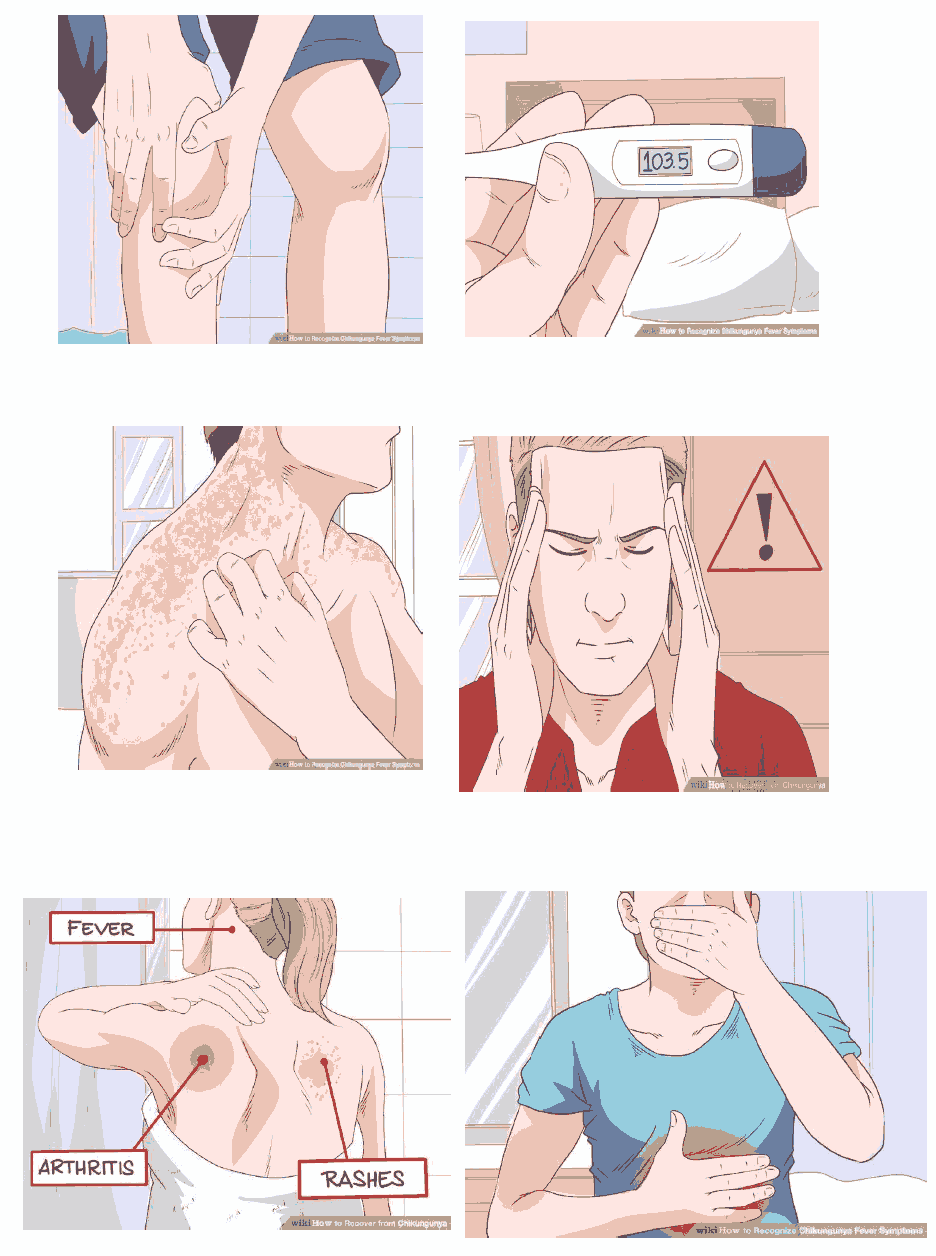Clinical Presentation
exp date isn't null, but text field is
Table 1: Clinical features of Chikungunya fever
|
Common |
Infrequent |
Rare in adults but seen in children |
|
Fever Arthritis/ Arthralgia Backache Headache Rash |
Stomatitis Oral ulcers Exfoliative dermatitis Photosensitive hyperpigmentation |
Photophobia Retro-orbital pain Vomiting Diarrhoea Mental confusion Signs of meningeal irritation |
Fever
The fever varies from low grade to high grade, lasting usually for 24 to 48 hours. Fever rises abruptly in some, reaching 39-40°C, with chills and rigor, no diurnal variation, usually subsides with use of antipyretics.
Joint manifestation
The joint symptoms usually start with arthralgia or arthritis. Involvement is symmetric and often ankles wrists and small joints of the hand are the worst affected. Migratory polyarthritis with effusions may be seen, but resolves in the majority. Larger joints like knee and shoulder and spine were also involved. Pain tends to be worse in the morning, relieved by mild exercise and exacerbated by aggressive movements. The pain may be relieved for 2-3 days and then reappear in a saddle back pattern. There is a tendency for early and more significant involvement of joints with some trauma or degeneration. The classical bending phenomenon was probably due to the lower limb and back involvement which forced the patient to stoop down and bend forward.

MucoCutaneous manifestation
Transient maculopapular rash is commonly seen, usually disappear within 48 hours. Other skin lesion may appear in the form of vesiculbullous eruption, angiomatous lesions and fewer had purpuras. Epidermolysisbullosais also seen in children. Most skin lesions recovered completely except in cases where the photosensitive hyperpigmentation persisted. Stomatitis and oral ulcers also observed.
Neurological manifestation
Neurologic manifestations of meningo-encephalitis, encephalitis, acute encephalopathy Guillain-Barré syndrome and myelitis were reported.
Ocular manifestation
Neuro-retinitis and uveitis in one or both eyes may occur. The main ocular manifestation associated with the recent epidemic outbreak of chikungunya virus infection in South India included granulomatous and nongranulomatous anterior uveitis, optic neuritis, retrobulbar neuritis, and dendritic lesions. Majority of the patients recover with good vision.
